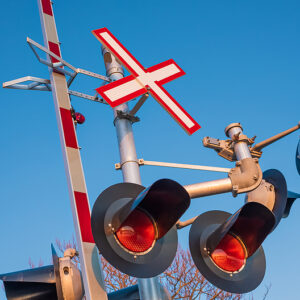The derailment of a train carrying hazardous materials in East Palestine, Ohio, earlier this year has reinvigorated congressional interest in improving rail safety in the United States. As Congress considers legislation to improve the safety of the nation’s rail system, investing in technologies that can help prevent future accidents should be a priority. Specifically, Congress should direct the Federal Railroad Administration (FRA) to support further testing and deployment of automated technologies that leverage advances in computer vision, machine learning and data analytics to provide real-time data on the condition of the tracks and help identify potential safety hazards.
Frequent inspections are necessary to identify and fix defects to ensure the rail system is safe and reliable. In the past, the only option was for track inspectors to do this work manually. Workers visually inspect the rails using specialized equipment to measure and check track conditions, ensuring everything is in good condition. But manual inspections are expensive, not only because of the cost of labor to perform the inspections but also because inspections can affect the use of railways and cause traffic delays.
One solution to this problem is using an autonomous track geometry measurement system(ATGMS). ATGMS is an advanced technology that uses lasers, cameras and other sensors to measure the condition of the tracks and provide data on the geometry of the rails, including curvature, alignment and elevation. This information is critical to ensuring the safe operation of trains and preventing accidents caused by track defects or other issues. With ATGMS, rail operators can quickly identify and address potential safety hazards, such as broken rails, uneven tracks or other defects that could cause derailments or accidents.
Despite the potential benefits of ATGMS, the Federal Railroad Administration has done little to support the deployment of this next-generation safety technology. Instead, it has only issued short-term waivers for some pilot projects despite them projects showing impressive results by finding defects that visual inspections would otherwise miss. But unless the FRA commits to allowing rail operators to use this technology when it proves effective, it will discourage the private sector from continuing to invest in this innovative safety technology.
Recent advances in artificial intelligence show that technology can sometimes outperform well-trained human experts — especially at pattern recognition or repetitive tasks, which are key parts of rail inspection. Indeed, concerns about how automated track inspection might supplant some workers are the main barrier to greater use of the technology. The Brotherhood of Maintenance of Way Employes Division, the union representing the workers who inspect and repair tracks, has opposed this technology because it might reduce the need for as many manual inspections.
Congress should not let this opposition stand in the way of doing what is necessary to improve safety. Indeed, many lawmakers have recognized that improvements in rail safety will require technological advancements. The bipartisan Railway Safety Act already proposes new funding for grants to improve the safety of tank cars and wayside defect detectors (the devices that detect problems in passing trains, such as elevated temperatures). But Congress should support the adoption of ATGMS by also providing funding for research and development and further testing of automated track inspection technologies.
Given the potential of this technology, Congress should include support for ATGMS in the Railways Safety Act to prevent future accidents. By investing in the development and testing of innovative technologies, Congress can help ensure that the nation’s rail system is safe and reliable.

